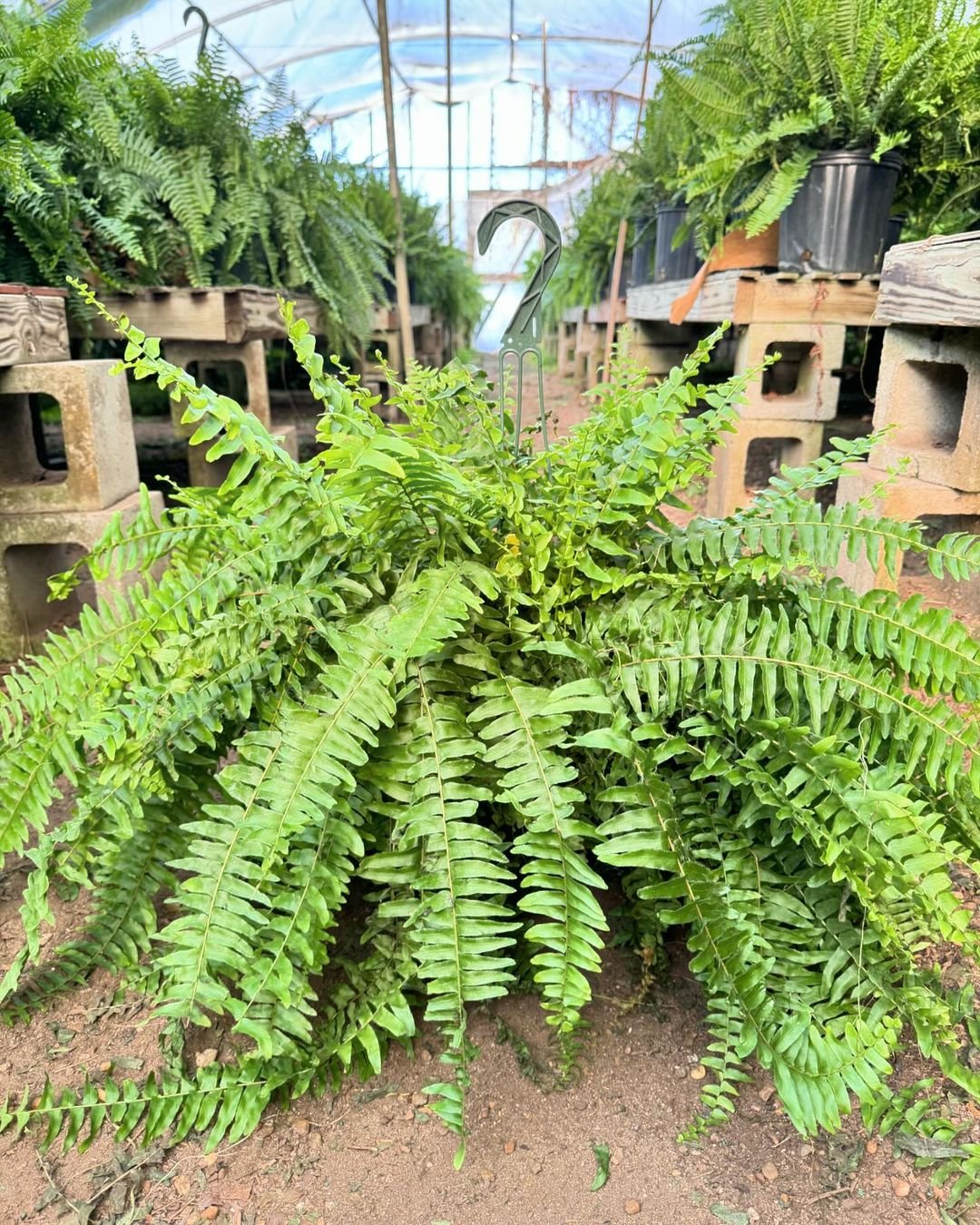Explore essential tips for caring for Kimberly Fern, a stunning indoor plant. Discover the best practices for watering, lighting and maintaining its vibrant health.
Are you looking to bring a touch of lush, tropical greenery into your home? Look no further than the Kimberly Fern. This beautiful plant, with its graceful, arching fronds, can transform any space into a serene oasis. But like all living things, it needs proper care to thrive. In this guide, we’ll walk you through everything you need to know about caring for your Kimberly Fern. From watering and lighting to soil and maintenance, we’ve got you covered. Whether you’re a seasoned plant parent or a beginner, these tips will help you keep your Kimberly Fern healthy, vibrant, and growing strong. Let’s dive in and discover how to make your Kimberly Fern the star of your indoor garden!
Here’s a summary of key details about the Kimberly fern:
| Aspect | Details |
|---|---|
| Botanical Name | Nephrolepis obliterata |
| Common Name | Kimberly Fern |
| Plant Zone | USDA Zones 10-11 (typically grown indoors or as a houseplant in cooler climates) |
| Sun Exposure | Indirect light to partial shade |
| Soil Type | Well-draining, rich in organic matter; a peat-based or fern mix is ideal |
| Watering | Keep the soil consistently moist; prefers high humidity |
| Growth Habit | Arching, feathery fronds; forms a dense, bushy clump |
| Height/Spread | Height: 2-3 feet (60-90 cm); Spread: 2-3 feet (60-90 cm) |
| Special Features | Known for its attractive, lush green foliage and tolerance for lower light conditions compared to many other ferns. Ideal for indoor settings or shaded garden areas. |
The Kimberly fern is valued for its decorative appeal and adaptability to indoor environments, making it a popular choice for home and office decoration.
What is a Kimberly Fern?

Kimberly Fern, also known as Nephrolepis obliterata ‘Kimberly Queen’, is a popular indoor plant. It’s loved for its lush, green fronds that can add a tropical feel to any room. This fern is native to Australia and is known for being easy to care for, making it a great choice for both new and experienced plant owners.
Why Choose a Kimberly Fern?
There are many reasons to add a Kimberly Fern to your home:
- It’s beautiful and can make your space look more lively
- It’s good at cleaning the air in your home
- It’s not too hard to take care of
- It can grow quite big, making it a great statement plant
Light Requirements for Kimberly Fern
Getting the right amount of light is key to keeping your Kimberly Fern healthy.
Best Light Conditions
Kimberly Ferns like bright, indirect light. This means:
- Place it near a window, but not in direct sunlight
- If you can read a book comfortably in the light, it’s probably good for your fern
- East-facing windows are often ideal
Signs of Too Much or Too Little Light
Your fern will tell you if it’s not getting the right amount of light:
- Too much light: The fronds may turn yellow or brown
- Too little light: The plant might grow slowly or have pale fronds
Watering Your Kimberly Fern
Watering is one of the most important parts of caring for your Kimberly Fern.
How Often to Water
Kimberly Ferns like to stay moist, but not soaking wet. Here’s a good rule:
- Water when the top inch of soil feels dry
- This might be once or twice a week, depending on your home
Best Watering Practices
To water your fern the right way:
- Use room temperature water
- Water until it runs out the bottom of the pot
- Don’t let the plant sit in water
Signs of Overwatering or Underwatering
Watch for these signs to know if you’re watering correctly:
- Overwatering: Yellowing fronds, soggy soil
- Underwatering: Dry, crispy fronds, soil pulling away from the pot sides
Humidity and Temperature for Kimberly Fern
Kimberly Ferns like humid conditions, just like in their natural habitat.
Creating the Right Humidity
To keep your fern happy:
- Mist the fronds regularly with water
- Use a pebble tray filled with water under the pot
- Consider using a humidifier nearby
Ideal Temperature Range
Kimberly Ferns prefer temperatures between 60-75°F (15-24°C). They can handle a bit warmer, but try to keep them away from cold drafts or air conditioning vents.
Soil and Fertilizer for Kimberly Fern
The right soil and food will help your Kimberly Fern thrive.
Best Soil Mix
Use a well-draining potting mix. A good mix might include:
- Peat moss
- Perlite
- Bark chips
Fertilizing Your Fern
Feed your Kimberly Fern to keep it growing strong:
- Use a balanced, water-soluble fertilizer
- Feed every 4-6 weeks during spring and summer
- Cut back on fertilizer in fall and winter
Pruning and Maintenance
Regular care will keep your Kimberly Fern looking its best.
How to Prune
Pruning helps your fern stay healthy and shaped nicely:
- Remove any yellow or brown fronds at the base
- Trim off any damaged parts of fronds
- Shape the plant by trimming longer fronds if desired
Repotting Your Fern
Repot your Kimberly Fern when it outgrows its current pot:
- Choose a pot 1-2 inches larger in diameter
- Repot in spring for best results
- Be gentle with the roots when repotting
Common Problems and Solutions
Even with good care, your Kimberly Fern might face some issues.
Here’s how to deal with them:
Pests
Common pests include:
- Spider mites
- Scale insects
- Mealybugs
To treat pests:
- Wipe down fronds with soapy water
- Use neem oil or insecticidal soap
- For bad infestations, consider a chemical pesticide
Diseases
Kimberly Ferns can sometimes get fungal diseases.
To prevent this:
- Avoid overwatering
- Ensure good air circulation
- Remove affected fronds quickly
Propagating Kimberly Fern
You can make more Kimberly Ferns from your existing plant.
Steps for Propagation
- Wait for your fern to produce small plantlets (baby ferns)
- Carefully separate these from the mother plant
- Plant them in small pots with moist soil
- Keep them in a warm, humid place until established
Decorating with Kimberly Fern
Kimberly Ferns can look great in many spots in your home.
Best Locations
Consider placing your fern:
- On a plant stand near a window
- Hanging in a basket in a bathroom (they love humidity!)
- As part of a group of plants in a living room
Pairing with Other Plants
Kimberly Ferns look nice with:
- Other ferns like Boston Fern or Bird’s Nest Fern
- Plants that like similar conditions, like Peace Lilies or Spider Plants
Caring for a Kimberly Fern can be a rewarding experience. With the right light, water, and care, your fern can grow into a beautiful, lush plant that adds life to your home. Remember to pay attention to your plant’s needs, and don’t be afraid to adjust your care routine as needed. With these tips, you’ll be well on your way to having a healthy, vibrant Kimberly Fern.
For more information on indoor plant care, check out the University of Vermont Extension’s guide: Caring for Houseplants
To learn about the air-cleaning benefits of houseplants, visit NASA’s Clean Air Study page: Interior Landscape Plants for Indoor Air Pollution Abatement








Leave a Reply